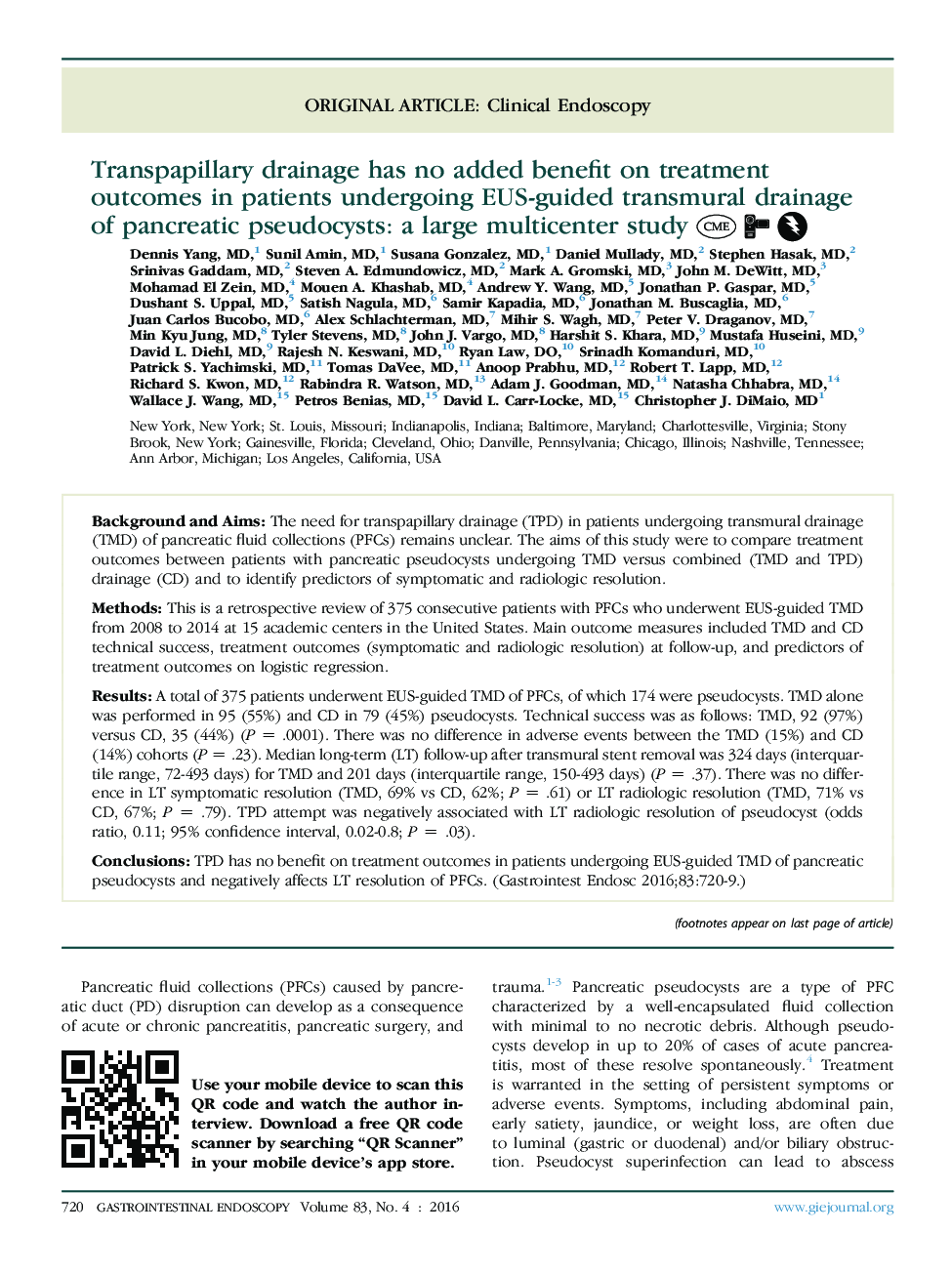| Article ID | Journal | Published Year | Pages | File Type |
|---|---|---|---|---|
| 3301709 | Gastrointestinal Endoscopy | 2016 | 10 Pages |
Background and AimsThe need for transpapillary drainage (TPD) in patients undergoing transmural drainage (TMD) of pancreatic fluid collections (PFCs) remains unclear. The aims of this study were to compare treatment outcomes between patients with pancreatic pseudocysts undergoing TMD versus combined (TMD and TPD) drainage (CD) and to identify predictors of symptomatic and radiologic resolution.MethodsThis is a retrospective review of 375 consecutive patients with PFCs who underwent EUS-guided TMD from 2008 to 2014 at 15 academic centers in the United States. Main outcome measures included TMD and CD technical success, treatment outcomes (symptomatic and radiologic resolution) at follow-up, and predictors of treatment outcomes on logistic regression.ResultsA total of 375 patients underwent EUS-guided TMD of PFCs, of which 174 were pseudocysts. TMD alone was performed in 95 (55%) and CD in 79 (45%) pseudocysts. Technical success was as follows: TMD, 92 (97%) versus CD, 35 (44%) (P = .0001). There was no difference in adverse events between the TMD (15%) and CD (14%) cohorts (P = .23). Median long-term (LT) follow-up after transmural stent removal was 324 days (interquartile range, 72-493 days) for TMD and 201 days (interquartile range, 150-493 days) (P = .37). There was no difference in LT symptomatic resolution (TMD, 69% vs CD, 62%; P = .61) or LT radiologic resolution (TMD, 71% vs CD, 67%; P = .79). TPD attempt was negatively associated with LT radiologic resolution of pseudocyst (odds ratio, 0.11; 95% confidence interval, 0.02-0.8; P = .03).ConclusionsTPD has no benefit on treatment outcomes in patients undergoing EUS-guided TMD of pancreatic pseudocysts and negatively affects LT resolution of PFCs.
